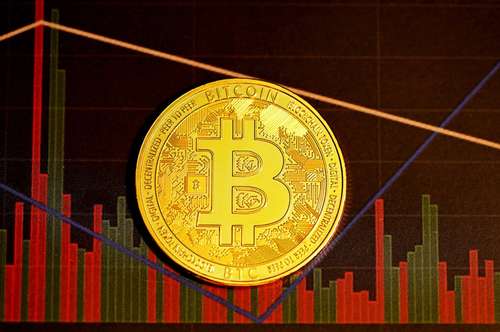According to data by industry portal Crypto Head, the world's most popular cryptocurrency, Bitcoin, is the most inked.
According to an examination of Instagram hashtags and Google search volumes, Bitcoin is far ahead of the second and third placegetters in the tattoo stakes - #dogecointattoo and #ethereumtattoo.
As the Russian ruble is banned out of foreign credit card transactions, remittances, and financial markets, cryptocurrencies have received the unpleasant honor of being in demand as a veiled asset.
There are concerns that the Kremlin and its cronies may circumvent sanctions by utilizing Bitcoin and Tether, which is pegged - or tethered - to the US dollar, according to Lambros Photios, CEO of Sydney-based software business Station Five.
Cryptocurrency trading in rubles on exchanges appears to be declining, despite regulators' insistence that Russians are using digital assets to avoid sanctions.
Bitcoin and Ethereum first rose in value as trading volumes increased in response to the tightening of sanctions against Russia.
However, some cryptocurrency is already being cashed in and transformed into physical assets like real estate, limiting returns and raising concerns about a convoluted and criminal money trail leading back to Australia.
Swift, Visa, Mastercard, and other multinational payment processors no longer accept payments in Russia, but consumers can still participate in the global economy by using cryptocurrency.
According to statistics from blockchain-analytic firm Chainalysis, the volume of ruble-denominated crypto trade had plummeted by more than half since a recent high of almost $70 million on March 7. The ruble's trade volume, at roughly $7.4 million, is a small part of the global total. The daily total volume of Bitcoin ranges from $20 billion to $40 billion.
President of the European Central Bank Christine Lagarde stated on Tuesday that there are indicators that Russians are attempting to circumvent sanctions by using cryptocurrency. Lagarde didn't give any concrete instances.
According to Madeleine Kennedy, Chainalysis' senior director of communications, the data only reflects possible crypto actions undertaken by Russian investors on crypto exchanges. It does not include all blockchain-based transactions.
The most popular ruble trading pair, the ruble-denominated Tether stablecoin, is also down from a March 7 peak of around $38 million, according to statistics given by crypto data firm Kaiko.
According to Kaiko, less than $5 million in RUB/USDT volume was reported on March 22. Binance, Yobit, and LocalBitcoins are the only three worldwide crypto exchanges that allow ruble-denominated crypto trading pairings, according to the firm.
Elliptic, a crypto forensics business, earlier announced that it had discovered a digital wallet linked to sanctioned Russian leaders and billionaires and had informed authorities. Crypto, according to the firm's co-founder, is not capable of facilitating large-scale avoidance by sanctioned institutions or individuals.
People need to be taught how to deal properly with digital currencies, just as they would with their bank account information, he argues, especially because crypto is the currency of choice for cyber criminals.
Meanwhile, bitcoin investors are still on a mostly uncontrolled roller coaster ride.
Ethereum, the second-largest cryptocurrency, and Bitcoin are both down about a third from their February highs.
Despite recent volatility, traders believe Bitcoin appears to be settling around $US40,000 ($55,000) and is still worth more than twice what it was a few years ago.
The new executive order on cryptocurrency signed by US President Joe Biden has gained some traction.
The US Treasury and other agencies have been tasked with formulating policies on the burgeoning digital asset sector and changing financial markets.
US regulators are also being encouraged to work out ways to protect against any systemic financial dangers posed by digital assets, which will provide some certainty.
According to CMC Markets analyst Tina Teng, the Russia-Ukraine conflict has aroused interest in the benefits of crypto transactions' decentralized structure.
More than a hundred countries, including Australia's central bank, are testing or developing Central Bank Digital Currencies (CBDCs), according to research.
A CBDC would see each central bank in charge of its own network and digital banknotes, rather than a decentralized cryptocurrency with few rules.
According to the central banks of Australia, Malaysia, Singapore, and South Africa, international settlements utilizing digital sovereign currencies might make cross-border payments faster, cheaper, and safer.
The Bank for International Settlements Innovation Hub has been testing new platforms with central bankers.




